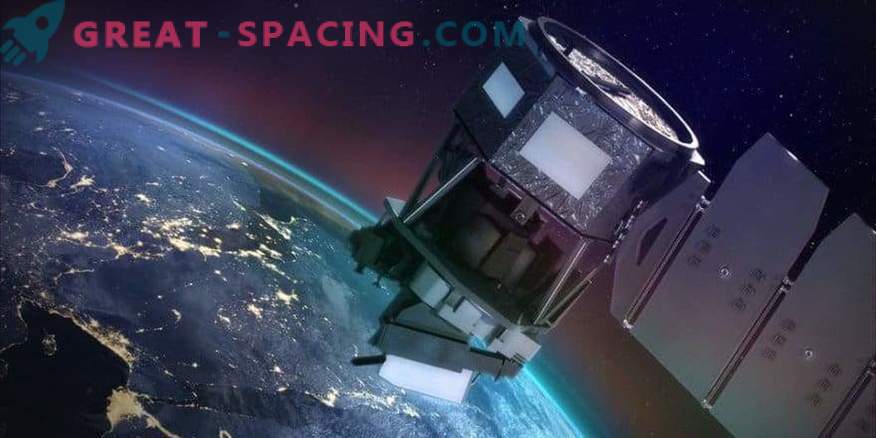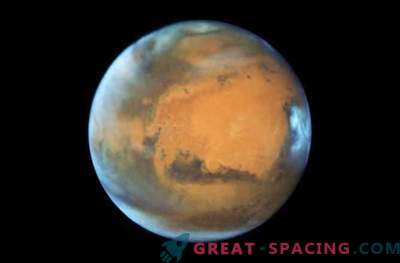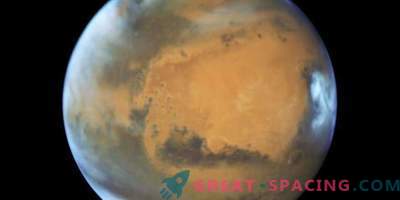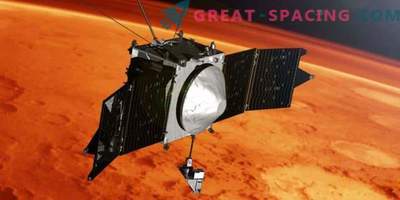
Charged particles in the earth's atmosphere form color bands above the planetary surface - an air glow. ICON, depicted by the artist, will study the ionosphere from a height of 350 miles in order to understand how the effects of terrestrial and cosmic weather affect this layer.
There is weather in space too. Instead of swirling vortices and showers, in space the weather is determined by the shift of electric and magnetic fields, and the rain can be called an attack of charged particles. At a height of 60 miles above the earth’s surface, there is a layer of the atmosphere moving and changing under the influence of both types of weather.
In the ionosphere, particles are boiled in a boiler of electrically charged electrons and ions by sunlight. It is here that the highest and thin layers of the neutral upper atmosphere of the planet appear, due to which both terrestrial and cosmic conditions influence the region.
Every day, mankind is winning a new portion of space, therefore the near-earth is filled with technical equipment and a station with people. Awareness of the fundamental processes affecting the upper atmosphere and the ionosphere will improve the protection of spacecraft and astronauts.
Two new NASA missions decided to team up to explore this area. In January 2018, global observations from GOLD will begin, and later ICON will be connected.
Both missions will provide a clear and complementary perspective: ICON - in near-earth orbit, and GOLD - in the geostationary orbit over the Western Hemisphere. They will cover a large-scale view of the ionosphere, as well as be able to control the current weather in the upper atmosphere.
GOLD tracks the landscape from a height of 22,000 miles above the earth's surface, and ICON tracks 350 miles. During certain periods, ICON will pass through the GOLD field of view, and each mission will receive a unique snapshot of certain regions. One of the goals is a systematic measurement of changes due to weather in the upper atmosphere.

The ionosphere is a region of charged particles in near-Earth space, coexisting with neutral gases in the upper atmosphere.
We are accustomed to think that only the solar wind is able to influence the ionosphere and only the lower atmospheric layer is affected by terrestrial weather. But now we see how energy is coming together. Of particular interest are several types of terrestrial meteorological phenomena. For example, researchers from the University of California created a theoretical model of the effects of El Nino in the ionosphere. They suggested that the event caused a rise in water vapor, and this led to an increase in the amount of solar energy absorbed by the atmosphere.
Bright red and green stripes (air) are noticeable in the view received by the ISS. Ignition occurs when gases in the upper atmosphere are charged by the sun. Measuring the light from the air flow, ICON and GOLD will find out a lot of information about neutral and charged particles
In addition to common goals, each of the missions is endowed with a personal list of tasks. GOLD will focus on what happens with the movement change in the upper atmosphere. It is especially interesting how the upper atmosphere reacts to geomagnetic storms. At night, GOLD will look at the glitches in the ionospheric dense bubbles of charged gas.
ICON will monitor the behavior and interaction of charged and neutral gases in the upper atmospheric layer. Certain factors are also of interest, such as shifts in neutral winds, pressure gradients and solar activity, which simultaneously affect the ionosphere.
ICON and GOLD - a small fleet of spacecraft, exploring an extensive interconnected system of space around the Earth and other planets. This is the third mission. The first was launched in 2001 - TIMED. But it lacks the tools for a full-scale analysis of the movement of particles in the upper atmosphere.











































